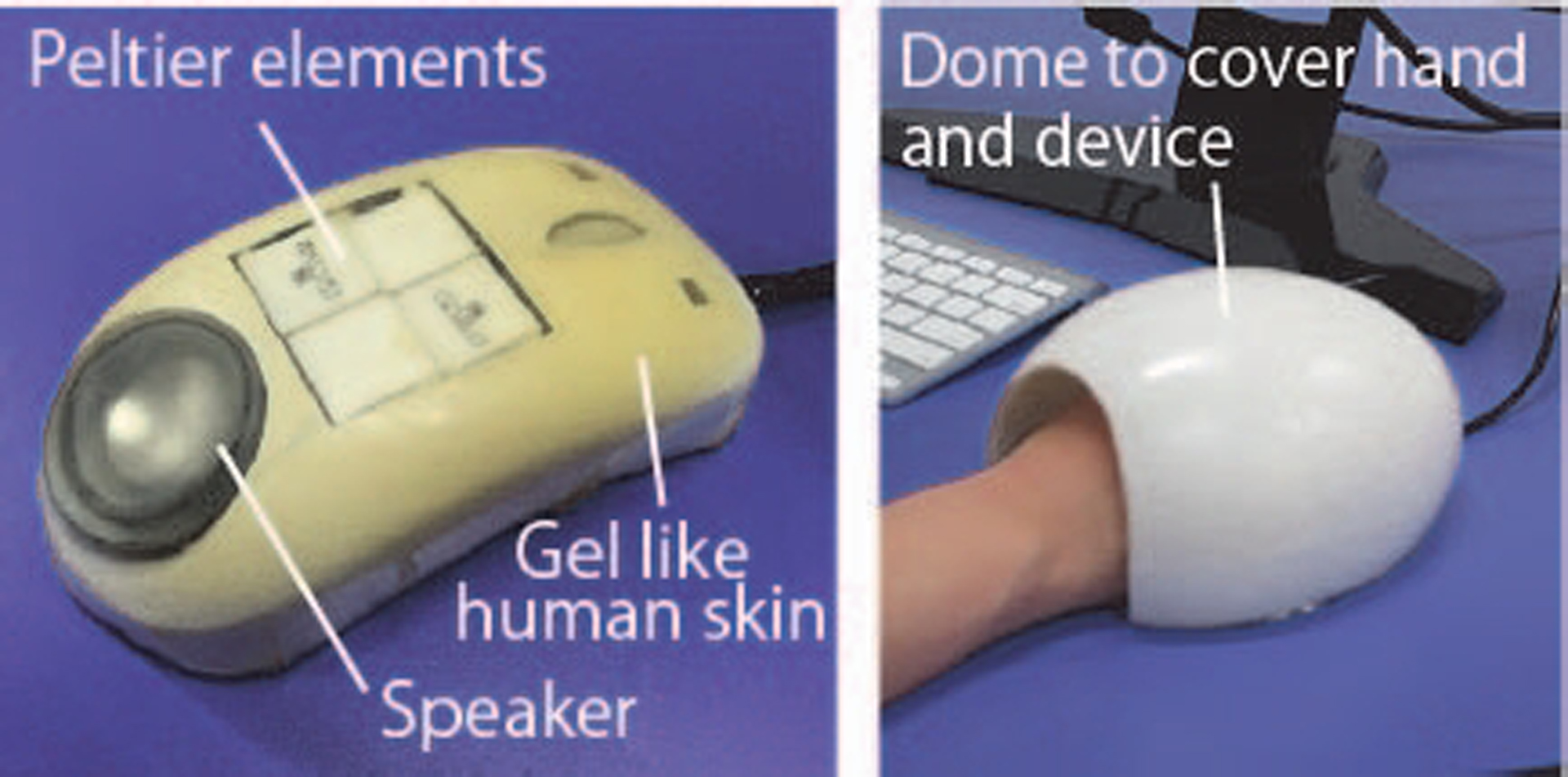“Communious Mouse: A Mouse Interface to Experience Emotions in Remarks on the Web by Extending and Modulating One’s Body Image”
Conference:
Experience Type(s):
Title:
- Communious Mouse: A Mouse Interface to Experience Emotions in Remarks on the Web by Extending and Modulating One's Body Image
Organizer(s)/Presenter(s):
Description:
In this paper, we propose a mouse interface for giving users others’ emotional experiences as own one by extending the body image to the mouse device through active controlling the mouse device of the users and modifying the extended body image that involve with others’ emotion.
References:
[1]
Bem, D. J. 1972. Self-perception theory. Advances in Experimental Social Psychology 6, 1–62.
[2]
Botvinick, M., and Cohen, J. 1998. Rubber hands ‘feel’ touch that eyes see. Nature 391, 6669, 756.
[3]
Carro, R. M., et al. 2012. Angry email? emotion-based e-mail tool adaptation. In LNCS Ambient Assisted Living and Home Care. 7657, 399–406.
[4]
Fukushima, S., and Kajimoto, H. 2012. Chilly chair: Facilitating an emotional feeling with artificial piloerection. In In Proc. of SIGGRAPH’ 12.
[5]
James, W. 1950. The principles of psychology., vol. 2. New York, Dover Publications.
[6]
Lecuyer, A. 2009. Simulting haptic feedback using vision: a survey of research and applications of pseudohaptic feedback. Teleoperators and Virtual Environments 18, 1, 39–53.
[7]
Nishimura, S., et al. 2012. Facilitation of affection by tactile feedback of false heartbeat. In In proc. of CHI EA’ 12.
[8]
Pang, B., and Lee, L. 2008. Opinion mining and sentiment analysis. Foundation and Trends in Information Retrieval 2, 1-2, 1–135.
[9]
Premack, D. G., and Woodruff, G. 1978. Does the chimpanzee have a theory of mind? BBS 1, 4, 515–526.
[10]
Ramachandran, V. S., and Brang, D. 2008. Tactile-emotion synesthesia. Neurocase 14, 5, 390–399.
[11]
Rodriguez, P., et al. 2012. Extracting emotions from texts in e-learning environments. In Intelligent and Software Intensive Systems (CISIS), 2012 Sixth International Conference on. IEEEs, 887–892.
[12]
Sakurai, S., et al. 2013. Comix: beyond: evoking multiple emotions using pseudo body responses depending on the context. In In Proc. of SIGGRAPH Asia’ 13 E-Tech, no. 3.
[13]
Sato, K., and Maeno, T. 2013. Presentation of rapid temperature change using spatially divided hot and cold stimuli. JRM 25, 3, 497–505.
[14]
Schachter, S., and Singer, J. 1962. Cognitive, social and physiological determinants of emotional state. Psychological. Review 69, 5, 379–399.
[15]
Schwoebel, J., and Coslett, H. B. 2005. Evidence for multiple, distinct representations of the human body. Journal of Cognitive Neuroscience 17, 4, 543–553.
[16]
Stolwijk, J. A. 1977. Responses to the thermal environment. In Federation proceedings, vol. 36.
[17]
Watanabe, K., and Yasumura, M. 2008. Visual haptics: generating haptic sensation using only visual cues. In In Proc. of the ACE2008, 405.
[18]
Yoshida, S., et al. 2013. Manipulation of an emotional experience by real-time deformed facial feedback. In In Proc. of AH2013, no. 35–42.





